Firstly, to introduce myself. My name is Dan Bolas. I am the current Senior Editor of Soccer Gaming, and up until December, was the senior columnist on PESGaming. I am a huge sporting video game fan, and the chances are if there is a genre of sports game out there, I own an instalment of it in some shape or form. By the above credits, it’s pretty obvious I am a football gaming enthusiast, and in my roles on the various sites, have made some excellent contacts within the video gaming industry, and spent a lot of time speaking to likeminded fans of sports gaming.
Having spoken to the team at CricketGaming.net, they have very kindly given me the opportunity to write a guest column on 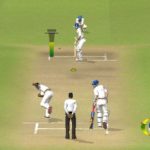 another subject which I have a strong passion for and that is Cricket video gaming. As a decent fast bowler in my younger years, I fell; I became very involved in Cricket during my school years, and then through games such as Brian Lara’s Cricket and the EA Sports franchises, managed to get my fix of ‘playing’ cricket when others were spending time in pubs and clubs on a Sunday afternoon. This column is written purely as a fan of the gaming genre, and hopefully will provide some views that you may agree or disagree with. Either way, please give feedback, as I would love to maybe pass something on to a contact in the industry, who will also be receiving a link to the article.
another subject which I have a strong passion for and that is Cricket video gaming. As a decent fast bowler in my younger years, I fell; I became very involved in Cricket during my school years, and then through games such as Brian Lara’s Cricket and the EA Sports franchises, managed to get my fix of ‘playing’ cricket when others were spending time in pubs and clubs on a Sunday afternoon. This column is written purely as a fan of the gaming genre, and hopefully will provide some views that you may agree or disagree with. Either way, please give feedback, as I would love to maybe pass something on to a contact in the industry, who will also be receiving a link to the article.
So to begin, Cricket is far from the easiest game to translate into a high intensity gaming experience. With games today featuring roaming free worlds, immersive 32 player battles and a wealth of customisation options, Cricket is always going to be 11 V 11 in a oval shaped stadium, played at a pace that is, by many sports standards, laboured. Even the more action packed modes of the real game, Twenty20 Cricket do not lend themselves well to a quick fix of action. But, for fans of the sport, none of this will actually matter too much. When you pick up a Cricket game, the aim for any developer is to have created a realistic and ultimately enjoyable gaming experience, something which hasn’t always happened over the years.
To digress slightly, my focus is solely here on live action cricket games, in other words game such as International Cricket 2010 or Ashes 2009. Games like Cricket Captain serve their purpose reasonably well, and in a similar way to the football management simulations, provide an accurate if slightly exaggerated experience of taking up that particular role. However, and in spite of the PC being the only ‘real’ source of Cricket video gaming for several years, I am concentrating on games made for the Playstation Three 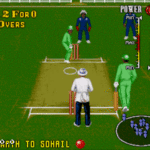 and the X Box 360.
and the X Box 360.
So, having played a variety of games, and going back over my older titles for inspiration, I have come up with seven key ideas I feel would be welcomed into any Cricket title, be it by an exisiting developer or a new kid on the block. My template for the ideas is based on Ashes 2009, which I personally have played into the ground and definitely found areas of improvement. I know with Cricket Revolution and IC 2010 on the market, certain features may be slightly different, however, I believe these ideas may be implemented to improve any game. My final point on this is that I have gone for realistic and implantable ideas, things that are possible and developable.
1. Catches Win Matches
Personally, I feel the catching system in all cricket titles have missed a huge trick. We don’t need meters, we don’t need colour co-ordinated flashing icons and we certainly don’t need bullet time cameras. My suggestion is a really simple, real time sequence using 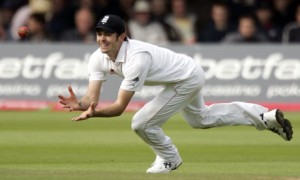 reactions. When the ball is hit towards a fielder, a small icon indicating a face button to be pressed will pop up quickly, and you must press the button instantly to perform the catch. So, if the batsman edges the ball to first slip, without the action slowing down you might need to quickly tap SQUARE or B to perform a catch. If the ball reaches the player and the button hasn’t been pressed, it’s a drop. Press it quickly, you will perform a catch. The system could be developed further so on a harder difficulty setting, the face button in question would be random. Higher catches could require a sequence of button presses whilst the ball is travelling, with better fielders requiring less buttons to be pressed. For example a lofted catch towards Collingwood would require a Square, Circle combination pressed, whereas the same hit towards Panasar, for example, would require Square, Circle, Triangle, Square, Circle. This would add a great deal of credit when playing multiplayer, as those gamers who have quick reactions will gain those vital slip catches, whereas slower gamers will put crucial chances down. Finally on the subject, superb diving catches, the likes of which are usually seen as cover point or again in the slips could require a shoulder button + face button combination. Press just the face button, and the ball will be stopped, but manage to work it with an L1, or R1 as prompted, and you can pull off a wonder catch. With all this happening at full speed, it would really keep the action flowing, and turn catching into a skill as opposed to a mini game.
reactions. When the ball is hit towards a fielder, a small icon indicating a face button to be pressed will pop up quickly, and you must press the button instantly to perform the catch. So, if the batsman edges the ball to first slip, without the action slowing down you might need to quickly tap SQUARE or B to perform a catch. If the ball reaches the player and the button hasn’t been pressed, it’s a drop. Press it quickly, you will perform a catch. The system could be developed further so on a harder difficulty setting, the face button in question would be random. Higher catches could require a sequence of button presses whilst the ball is travelling, with better fielders requiring less buttons to be pressed. For example a lofted catch towards Collingwood would require a Square, Circle combination pressed, whereas the same hit towards Panasar, for example, would require Square, Circle, Triangle, Square, Circle. This would add a great deal of credit when playing multiplayer, as those gamers who have quick reactions will gain those vital slip catches, whereas slower gamers will put crucial chances down. Finally on the subject, superb diving catches, the likes of which are usually seen as cover point or again in the slips could require a shoulder button + face button combination. Press just the face button, and the ball will be stopped, but manage to work it with an L1, or R1 as prompted, and you can pull off a wonder catch. With all this happening at full speed, it would really keep the action flowing, and turn catching into a skill as opposed to a mini game.
2. Lights, Camera, Action
I have absolutely no problem with the new ideas used for the camera angles on IC 2010. The over the shoulder bowling and batting cameras are a nice touch, and whilst I will always be a tradition broadcast camera fan, as long as the option is there I will be more  than happy. People who watch the sport of the TV want a view they can relate to, and Cricket games have stuck by this for years. However, where the camera angles do fall down is when the ball is in the field. The new run camera for IC 2010 didn’t really work, and the downright weird angles from Ashes 2009 make viewing catches sometimes impossible. My suggestion for a fielding camera is again quite simple, but also quite easy. Firstly, keep the batting box exactly the same whether you are the batting or fielding team. Then as the ball is struck, the camera immediately pans to one of two predetermined positions, one which is focussed mainly on the inner circle, and the other which gives a whole view of the boundary. The choice of camera would depend on the power and direction of the shot. As a fielder approaches the ball, the camera then zooms in onto the action, be it a simple field, a catch or a boundary. Ashes 2009 did something similar to this, but brought in silly action cameras for catches which usually made seeing the actual catch impossible. Sometimes, the best camera angles are the most obvious ones, and developers sometimes forget this in an attempt to be more creative.
than happy. People who watch the sport of the TV want a view they can relate to, and Cricket games have stuck by this for years. However, where the camera angles do fall down is when the ball is in the field. The new run camera for IC 2010 didn’t really work, and the downright weird angles from Ashes 2009 make viewing catches sometimes impossible. My suggestion for a fielding camera is again quite simple, but also quite easy. Firstly, keep the batting box exactly the same whether you are the batting or fielding team. Then as the ball is struck, the camera immediately pans to one of two predetermined positions, one which is focussed mainly on the inner circle, and the other which gives a whole view of the boundary. The choice of camera would depend on the power and direction of the shot. As a fielder approaches the ball, the camera then zooms in onto the action, be it a simple field, a catch or a boundary. Ashes 2009 did something similar to this, but brought in silly action cameras for catches which usually made seeing the actual catch impossible. Sometimes, the best camera angles are the most obvious ones, and developers sometimes forget this in an attempt to be more creative.
3. Stuck On Replay
Manual replays are a must for any future cricket video games. For every fan that doesn’t like them, there are several fans that like 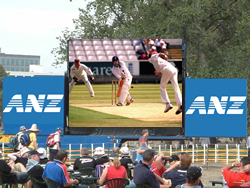 to zoom in on the action to see a dubious LBW or Bat Pad decision again. Giving the gamer the option of pressing pause and watch the last ball or last over again with their choice of when to stop the action, when to slow it down and also when to change and view from a more dynamic camera angle is commonplace in every other sports title, and needs to be included in the next band of cricket games. Personally, I love to see a piece of bowling that has resulted in a edge to slip again, and having control over the action to watch it until my hearts content would be a bonus. Giving us the option to zoom the camera, focus on the ball etc. was something the EA Sports Cricket series did well. Further on replays, I would personally love to see brief highlights of the innings when a batman reaches 50, or the wickets so far at drinks, lunch or the end of an innings. This is something that would require slightly more programming, and require the game to use a little more memory, but in the end would give a more broadcast feel to the game. If each batsman had 6 deliveries saved to their innings of their best shots, coupled with the 10 wickets of an innings, you would be looking at a maximum of 70 balls to flick through at the end of the innings should you wish. Anyone who has played NBA 2k10, which saves every single block, steal and point scored, you will appreciate where I am coming from here. Of course, these could be simply skipped by pressing start, but most fans like to see the fruit of their labours, especially if it involves eclipsing a batting line up with devastating pace bowling.
to zoom in on the action to see a dubious LBW or Bat Pad decision again. Giving the gamer the option of pressing pause and watch the last ball or last over again with their choice of when to stop the action, when to slow it down and also when to change and view from a more dynamic camera angle is commonplace in every other sports title, and needs to be included in the next band of cricket games. Personally, I love to see a piece of bowling that has resulted in a edge to slip again, and having control over the action to watch it until my hearts content would be a bonus. Giving us the option to zoom the camera, focus on the ball etc. was something the EA Sports Cricket series did well. Further on replays, I would personally love to see brief highlights of the innings when a batman reaches 50, or the wickets so far at drinks, lunch or the end of an innings. This is something that would require slightly more programming, and require the game to use a little more memory, but in the end would give a more broadcast feel to the game. If each batsman had 6 deliveries saved to their innings of their best shots, coupled with the 10 wickets of an innings, you would be looking at a maximum of 70 balls to flick through at the end of the innings should you wish. Anyone who has played NBA 2k10, which saves every single block, steal and point scored, you will appreciate where I am coming from here. Of course, these could be simply skipped by pressing start, but most fans like to see the fruit of their labours, especially if it involves eclipsing a batting line up with devastating pace bowling.
4. In Confidence
I love the confidence and fatigue metres on Ashes and IC 2010, and again with some tweaking they could be fantastic. I feel in their current format, that is not effective enough, especially when it comes to confidence. Instead of the metre, a suggestion would be a figure out of 20, which would fluctuate depending on the spell in the game. The figure would rise and fall depending on the phase of the game (before lunch etc), the field settings and previous deliveries. So for example, someone like Mike Hussey could come in with a high confidence rating, 17 or 18, and wouldn’t get affected too much by any extra circumstances. His number may then drop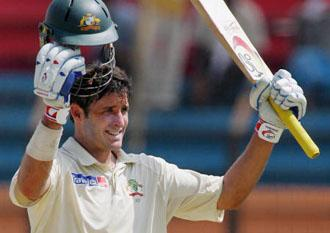 if he gets hit by a short ball, or plays at a ball and misses, or edges one that is then dropped. By the same token, it would rise up to a maximum or 20 with well played defensive shots, good leaves, runs and boundaries. A tall-ender on the other hand would come in with a much lower number, for example a 3 or 4, and therefore would have to work a lot harder to get his confidence with the bat up. The higher the number, the more chance you have of timing a shot well, or adapting a shot through the field, in other words a player trying to sweep a spinner with confidence of 4 is much more likely to give it a top edge or miss it all together than say one with a high teens rating. These ratings would obviously be a lot more forgiving in say Twenty20 mode than in a one day or test match, but would still set a president for playing the right shot at the right time. Bowlers would have a similar setting, which would relate to the speed, variety and accuracy of their deliveries. A pace bowling hitting dot balls would gradually get up to a higher confidence level, which in turn would allow him to ball quicker and more accurately. If he gets slapped around the park a little bit, and his confidence drops, he may lose a couple of mph, or lose the ability to get as much swing on the ball. This data still could be shown in metre form, but work on a basis of numbers, as then it would have genuine effect on the game. Having bowled five dots at Mitchell Johnson on Ashes 2009, for of which he swung at and missed, his confidence was still sky high on the sixth ball! This would make gamer’s thing tactically about their decisions, something which is, of course, part of real cricket.
if he gets hit by a short ball, or plays at a ball and misses, or edges one that is then dropped. By the same token, it would rise up to a maximum or 20 with well played defensive shots, good leaves, runs and boundaries. A tall-ender on the other hand would come in with a much lower number, for example a 3 or 4, and therefore would have to work a lot harder to get his confidence with the bat up. The higher the number, the more chance you have of timing a shot well, or adapting a shot through the field, in other words a player trying to sweep a spinner with confidence of 4 is much more likely to give it a top edge or miss it all together than say one with a high teens rating. These ratings would obviously be a lot more forgiving in say Twenty20 mode than in a one day or test match, but would still set a president for playing the right shot at the right time. Bowlers would have a similar setting, which would relate to the speed, variety and accuracy of their deliveries. A pace bowling hitting dot balls would gradually get up to a higher confidence level, which in turn would allow him to ball quicker and more accurately. If he gets slapped around the park a little bit, and his confidence drops, he may lose a couple of mph, or lose the ability to get as much swing on the ball. This data still could be shown in metre form, but work on a basis of numbers, as then it would have genuine effect on the game. Having bowled five dots at Mitchell Johnson on Ashes 2009, for of which he swung at and missed, his confidence was still sky high on the sixth ball! This would make gamer’s thing tactically about their decisions, something which is, of course, part of real cricket.
5. Personality Please
This one links slightly to confidence, but is something which would push any new cricket title onto the next level. Nowadays, it’s not enough for players to simply look like their real life counterparts; they have to play like them too. Play on PES 2011 against 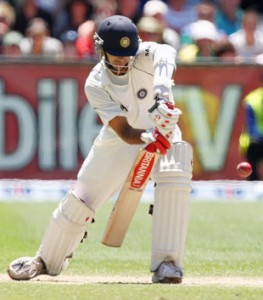 Lionel Messi, and watch how he will dribble, play against the San Antonio Spurs on NBA 2K11, watch how they try and work the ball to free up Manu Ginobili for a three pointer. For me, players need to have traits which can be worked out, and with a current roster of approximately 250 players, there is definite scope for that in a cricket title. Play against Rahul Dravid, and you want to see a player blocking a lot of shots, bowl to KP, and expect the big extravagant shots. This is the core element of this mode, but it could be taken further too. Players could develop strengths and weaknesses, which could then be exploited when bowling. Shane Watson batted beautifully in the Ashes series recently, but if England managed to bowl a few dot balls against in and get a few maidens, he would begin to panic and start pushing at shots which leads to edges. Pointing is a notoriously slow starter, and therefore could come out with a slightly lower confidence level than his overall batting rating should dictate. Some batsmen struggle against spin or in certain conditions, and this again could be related to their personality and confidence. At the moment, and especially in my recent games on console cricket, I know I can bowl the same way to the entire team and get wickets, and I want to have to adapt my style too. Yes, this would require a great deal of programming, but giving a player one of say 30 optional traits that makes them play differently would be a hugely welcomed bonus.
Lionel Messi, and watch how he will dribble, play against the San Antonio Spurs on NBA 2K11, watch how they try and work the ball to free up Manu Ginobili for a three pointer. For me, players need to have traits which can be worked out, and with a current roster of approximately 250 players, there is definite scope for that in a cricket title. Play against Rahul Dravid, and you want to see a player blocking a lot of shots, bowl to KP, and expect the big extravagant shots. This is the core element of this mode, but it could be taken further too. Players could develop strengths and weaknesses, which could then be exploited when bowling. Shane Watson batted beautifully in the Ashes series recently, but if England managed to bowl a few dot balls against in and get a few maidens, he would begin to panic and start pushing at shots which leads to edges. Pointing is a notoriously slow starter, and therefore could come out with a slightly lower confidence level than his overall batting rating should dictate. Some batsmen struggle against spin or in certain conditions, and this again could be related to their personality and confidence. At the moment, and especially in my recent games on console cricket, I know I can bowl the same way to the entire team and get wickets, and I want to have to adapt my style too. Yes, this would require a great deal of programming, but giving a player one of say 30 optional traits that makes them play differently would be a hugely welcomed bonus.
6. Animations
Simple point here, but the more animations, the better the game usually is. It stops glitches; it makes the ball come on to the bat smoothly and gives everything a more professional shine. I hate on IC Cricket 2010 the delay of appeal after a LBW of maybe 2 seconds between the bowler and slips, it should be instant, and the annoying fumbled catches which seem to be commonplace for any shot hit in the air. Go back 20 years, and look at the shoddy animations of the Mega drive game (which was still enjoyable to be honest) and it becomes plain to see the game needs to push on to the next level in 2011, as it did between 1996 and 1998.
7. The Little Things
The key for the last point is to change the little things, and make sure they are the right things. As a fan, I don’t want to see new advanced control methods using dual analogue sticks and shoulder buttons. I don’t want 20 fake teams to recreate a fictional IPL. I’d much rather see a fully licensed international game with space for custom teams and players, which would allow users to create their own content, something which PES has done for years. Keep the TV style presentation up, use more stats and save them, so we can look back if required and see previous performances. Cricket is built on statistics, so make the most of the games we play. Make the game more online accessible. A 5 over game might not be great offline, but it would be a 20 minutes fix online that would appeal to the current generation of youth gamers. It could be patented and produced as a bonus mode which would work alongside the main game. Give us the option to appeal; if we overuse it, our player confidence would begin to drop, and if we don’t appeal when it’s out, the umpire doesn’t have to give it. Like I said, the little things!
Thanks for taking the time to read my ideas and suggestions. This started at a 30 minute project and has gone on for the best part of 3 hours, including research. Hopefully you will have some views on what has been put above, and feel free to e-mail me personally on [email protected] if you wish to discuss them. Finally, may I add that I am a huge fan of the current crop of cricket games, and like many of you guys, want to play the best cricket game I possibly can. I hope and feel that the above can improve the current titles available.
Thanks for Reading
Dan Bolas
www.soccergaming.com


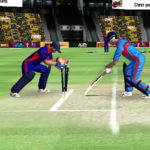
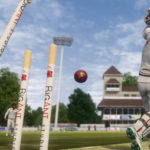
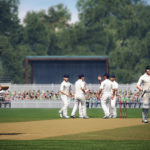


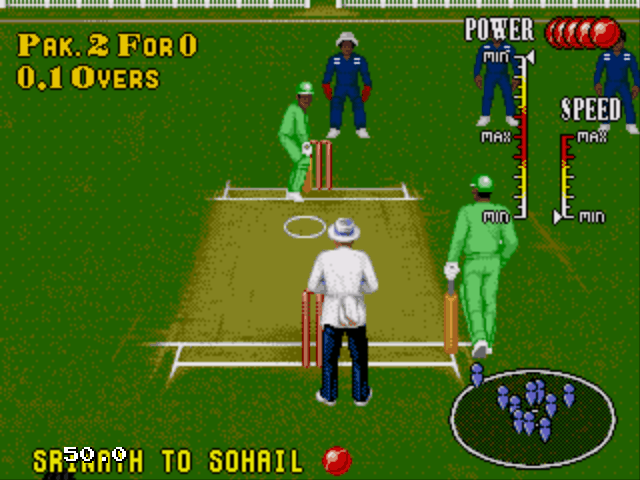


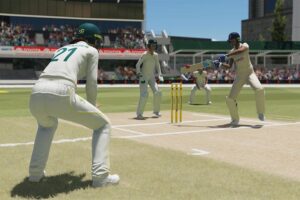










Amazing…perfectly told i loved the personality section it should be done will add another dimension to this cricketing game…even the fielding..would be reaistic…but sir pls if u have any chnce of creating this sorta game do not forget to release it on pc too 🙂 thnk u amazing thoughts and if u can do check on the six hitting options in cricket 07 its pretty much easy …hitting sixes must be challenging and even finding gaps through fielders which would add a lot of reality to the games 🙂 thnk u
[…] Originally posted here: Guest Column: Cricket Gaming – The Future – CricketGaming […]
[…] Original post: Guest Column: Cricket Gaming – The Future – CricketGaming […]
[…] Guest Column: Cricket Gaming – The Future […]
[…] Read the original: Guest Column: Cricket Gaming – The Future – CricketGaming […]
[…] Guest Column: Cricket Gaming – The Future – CricketGaming Posted in General Tags: captain, gaming, international, ipl, producer, producer-stick, related, […]
[…] here to see the original: Guest Column: Cricket Gaming – The Future – CricketGaming Tags: captain, cricket, gaming, international, interview, ipl, producer, related, […]
very well said……..but then getting all of this right would be wishing for the impossible
Nice article.
My wishilst for games is:
A manager game similar to Michael Vaughan’s Cricket Manager, that has a match engine of Cricket Captain.
Michael Vaughan’s cricket was much less regulated as opposed to real competition rules, you could take as many internationals as you liked, and manage teams anywhere in the world. Just need a champions league style tournament for both first class and one day games, and it would have been awesome.
I got Michael Bevan on a free transfer at some crappy Sri Lankan team, went onto win the league and cup double, etc.
Also, with the “playing games” such as Brian Lara’s cricket, etc. I always find that after a while I will score at a rate of around 12-18 runs per over. It’s just a cricket game afterall.
To make test matches more interesting (particularly as I typically skip the bowling innings), it would be good if the computer batted at around those run rates, and the number of overs per day could be shortened to say 30. It would bring the draw into the game, and encourage big hitting inning scores of around 400 – more of a test feel, even if you are smashing it out of the ground…